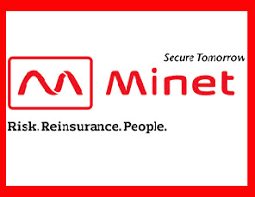
Navigating Business Interruption Insurance Costs: A Comprehensive Guide
Introduction
In the dynamic landscape of business, unforeseen events and disruptions can strike at any moment, posing significant threats to the continuity of operations. Recognizing the imperative need for safeguarding against such uncertainties, businesses turn to Business Interruption Insurance (BII) as a vital risk management tool. However, understanding the factors that influence the cost of this insurance is crucial for making informed decisions. In this comprehensive guide, we delve into the nuances of Business Interruption Insurance costs, providing insights into the variables at play, industry benchmarks, and strategies for optimizing coverage while managing expenses.
Understanding Business Interruption Insurance
Business Interruption Insurance, also known as Business Income Insurance, is designed to protect businesses from financial losses incurred due to disruptions that interrupt normal business operations. These disruptions can arise from various sources, such as natural disasters, fire, cyberattacks, or other unforeseen events.
Cost Factors in Business Interruption Insurance
- Business Type and Industry: The nature of the business significantly influences the cost of Business Interruption Insurance. Industries prone to high-risk factors, such as manufacturing or hospitality, may experience higher premiums. Additionally, the type of products or services offered can impact the perceived risk.
- Coverage Limits and Duration: The extent of coverage and the duration for which the business seeks protection play a pivotal role in determining costs. A business opting for higher coverage limits and longer durations will typically face higher premiums. Striking the right balance between adequate coverage and affordability is crucial.
- Risk Assessment: Insurers conduct a thorough risk assessment before determining the premium. Factors such as the business’s location, susceptibility to natural disasters, security measures in place, and historical loss data are considered. A comprehensive risk management strategy can positively influence insurance costs.
- Financial History and Stability: The financial health and stability of a business are critical factors for insurers. Companies with a robust financial history and risk management practices may secure lower premiums, as they are perceived as lower risks.
- Supply Chain Vulnerabilities: Businesses heavily reliant on intricate supply chains may face higher premiums. The insurance cost may increase if the supply chain is susceptible to disruptions, impacting the insured’s ability to operate seamlessly.
- Previous Claims History: Insurers assess a business’s claims history to gauge its risk profile. A company with a history of frequent or substantial claims may face higher premiums. Conversely, a clean claims record can result in more favorable insurance rates.
- Geographical Location: The geographical location of a business holds significance in determining insurance costs. Areas prone to natural disasters, political instability, or high crime rates may face higher premiums due to increased risk.
- Policy Add-ons and Riders: Additional coverages, such as contingent business interruption or extra expense coverage, can add to the overall cost. While these options enhance protection, businesses should carefully evaluate the necessity of each add-on to manage costs effectively.
Strategies for Optimizing Business Interruption Insurance Costs
- Risk Mitigation Measures: Implementing robust risk mitigation measures can not only enhance the resilience of the business but also contribute to lower insurance costs. This may include investing in security systems, disaster-resistant infrastructure, and comprehensive business continuity plans.
- Regular Policy Review and Updates: As the business environment evolves, it’s essential to regularly review and update the insurance policy. This ensures that coverage remains aligned with the current risk landscape, preventing overpayment for unnecessary coverage or gaps in protection.
- Comparative Shopping: Businesses should not hesitate to shop around for the best insurance deals. Different insurers may offer varying rates and coverage options. Seeking multiple quotes and comparing terms can aid in securing the most cost-effective solution.
- Risk Management Partnerships: Collaborating with risk management professionals and consultants can provide valuable insights. These experts can assist in identifying potential risks, implementing preventive measures, and negotiating favorable terms with insurers.
- Bundle Policies: Combining multiple insurance coverages, such as property and liability insurance, into a comprehensive business insurance package, can often result in cost savings. Insurers may offer discounts for bundling policies.
- Maintain Accurate Documentation: Accurate and up-to-date documentation of the business’s assets, operations, and financials is essential. In the event of a claim, thorough documentation can expedite the claims process and prevent disputes that may impact future premiums.
Conclusion
Business Interruption Insurance is a critical component of a comprehensive risk management strategy, providing financial protection in times of crisis. While the cost of this insurance can vary based on numerous factors, businesses can take proactive measures to optimize coverage and manage expenses effectively. By understanding the intricacies of Business Interruption Insurance costs, implementing risk mitigation strategies, and regularly reassessing policies, businesses can navigate the dynamic landscape of uncertainties with confidence and financial resilience.






